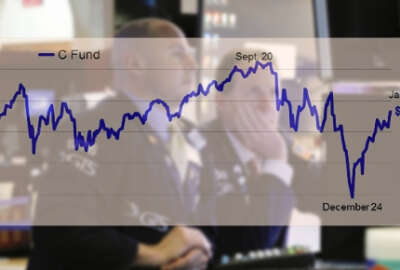
Riding the stock market waves to a $1M TSP
Allan Roth, founder of Wealth Logic and a nationally syndicated financial columnist, said that when it comes to investing, his motto is "Dare to be dull," as in...
Editor’s note: Since Mike Causey is out of the office, the following column is being republished. It originally ran Feb. 20, 2019.
Allan Roth, founder of Wealth Logic and a nationally syndicated financial columnist, said long-term investing should only slightly more exciting than watching paint dry. When it comes to investing, his motto is “Dare to be dull,” as in boring.
His point is that good investors don’t panic and also don’t get euphoric when the stock market is up, or down, because that happens a lot. They don’t panic when it dips, thereby selling low. Nor do they try to time the market by getting back in when they think it is on the way up.
Warren Buffet, the late John Bogle and other experts have said they don’t time the market either. In fact that is one trait they share with thousands of federal workers who are nearing the $1 million mark within their Thrift Savings Plan accounts.
Except for a few rich people — i.e. politicians, political appointees and federal judges who brought money into their TSP accounts — the vast majority of TSP millionaires are men and women who did same things.
They invested for the long haul, staying with the stock-indexed C and S funds through thick, and especially thin times. When the markets dropped during the Great Recession they continued to buy stocks each period using the same amount of dollars but buying more shares because the shares were on sale.
They view their investment horizon in decades, not months, years or quarters. The average TSP millionaire has been at it for about 30 years. That’s not the definition of an overnight success, but does define a success.
Here’s how one happy and fortunate retired fed did it:
“Regarding your request to hear from TSP millionaires as to how they achieved this status, my experience is pretty ho-hum. I have been invested in the TSP since 1987. I reached the [$1] million mark in 2014 after having retired from the federal government. I have been withdrawing funds since 2015. By my birthday next month I will have withdrawn the equivalent of what I contributed to the TSP during my working career, yet I will still have nearly $925,000 left in my account, a nice birthday present.
“As a GS-14 for most of my career, I started out with zero in the TSP but always contributed the maximum, mostly invested in the C fund. When the Lifecycle funds became available, I shifted my investment into the Lifecycle 2020 Fund and left it there regardless of market conditions. Only once did I try to time the market back in the late 1990s, moving my money out of equities and into the G Fund and then shifting back when I thought the time was right.
“I lost relative to what I could have gained from staying in the C and S funds, but I learned from that mistake. I did take the advice of the experts, who in 2008 asserted that the market was greatly overvalued and recommended a conservative investment strategy, and shifted half my retirement funds into the Lifecycle 2010 Fund. I returned everything back into the Lifecycle 2020 Fund a few months after the market had contracted and benefited from the subsequent rapid recovery over the next couple of years.
“Now that I am reaping the rewards of having invested in the TSP, I continue to keep my funds in the L2020. The Federal Employees Retirement System managers have done excellently and I thank them!”
Nearly Useless Factoid
By Amelia Brust
The first color photograph was taken in 1861 by James Clerk Maxwell. He took three separate lantern slides of a tartan ribbon through red, green and blue filters, which were projected through the same filters using three separate magic lanterns. When the images were superimposed on a screen, they combined to make a colored image.
Source: National Science + Media Museum
Copyright © 2024 Federal News Network. All rights reserved. This website is not intended for users located within the European Economic Area.
Mike Causey is senior correspondent for Federal News Network and writes his daily Federal Report column on federal employees’ pay, benefits and retirement.
Follow @mcauseyWFED





